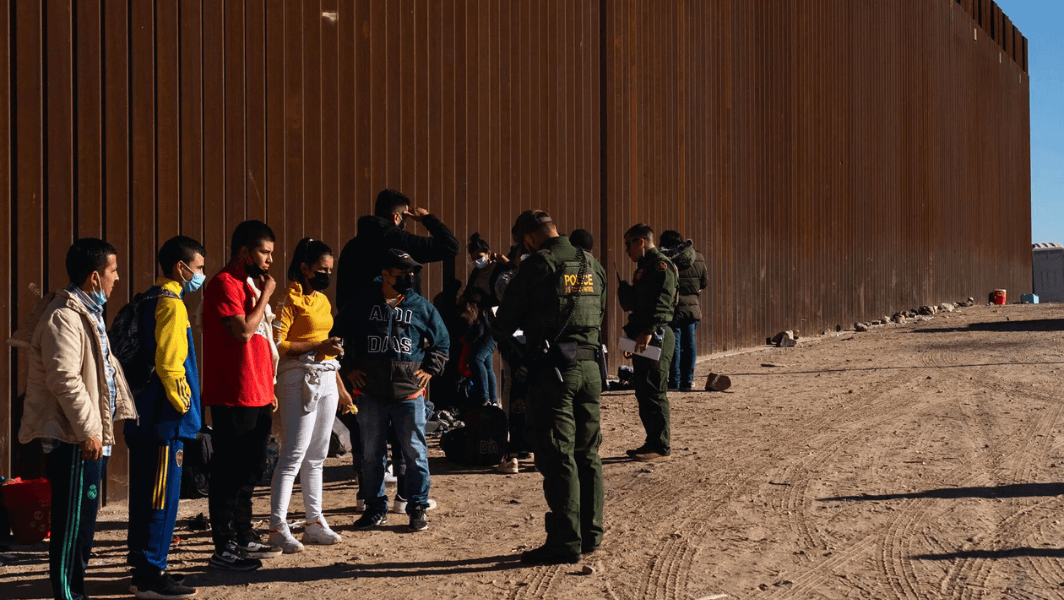
The Hidden Story of Indian Migrants in the US: 9 Key Insights
Illegal Immigration, Asylum Trends, and Deportations Explained
As immigration policies tighten under Donald Trump’s renewed push for mass deportations, the US government has identified 18,000 Indian nationals believed to have entered the country illegally. Meanwhile, Indian Prime Minister Narendra Modi has vowed to take back undocumented nationals and crack down on human trafficking networks.
A new research paper by Abby Budiman and Devesh Kapur from Johns Hopkins University sheds light on the numbers, demographics, migration routes, and trends shaping the undocumented Indian population in the US. Here are the most surprising findings.
-
How Many Undocumented Indians Are in the US?
Estimating the true number of unauthorized Indian immigrants is challenging, with varying figures reported:
-
Pew Research Center & CMS (2022): 700,000, making Indians the third-largest undocumented group after Mexico and El Salvador.
-
Migration Policy Institute (MPI): 375,000, ranking India fifth among origin countries.
-
Department of Homeland Security (DHS): 220,000 (2022).
The wide variation in estimates highlights the uncertainty surrounding the actual number of undocumented Indians in the US.
-
A Declining Trend, but a Recent Surge
Indian migrants make up a small fraction of all unauthorized immigrants, but their numbers have fluctuated:
-
The DHS estimates a 60% drop in undocumented Indians from 560,000 in 2016 to 220,000 in 2022.
-
The decline may be due to legal status adjustments or return migration during COVID-19 hardships.
-
However, a surge in border crossings in 2023 suggests that the actual number could now be higher.
-
More Encounters, Yet No Spike in Official Numbers
Despite a rise in border apprehensions, official US estimates do not show a clear increase in undocumented Indians:
-
Encounters refer to non-citizens detained while crossing the border.
-
The number of visa overstays by Indians has remained steady at 1.5% since 2016.
-
The number of Indian recipients of Deferred Action for Childhood Arrivals (DACA) has dropped from 2,600 in 2017 to 1,600 in 2024.
-
Changing Migration Routes: Canada as a New Entry Point
Traditionally, Indians crossed through the US-Mexico border. However, migration patterns are shifting:
-
Before 2010, Indian border encounters were below 1,000 per year.
-
By 2024, 36% of Indian crossings occurred via the US-Canada border, up from just 4% in 2023.
-
Canada’s faster visa processing times have made it a more accessible entry route.
-
The 2021–2023 migration surge coincided with Joe Biden’s election, as many migrants saw an opportunity to enter the US.
-
Where Do Undocumented Indians Live in the US?
The largest Indian immigrant states also have the highest numbers of unauthorized migrants:
-
California (112,000)
-
Texas (61,000)
-
New Jersey (55,000)
-
New York (43,000)
-
Illinois (31,000)
Indians form a significant portion of unauthorized migrants in:
-
Ohio (16%)
-
Michigan (14%)
-
New Jersey (12%)
-
Pennsylvania (11%)
Many undocumented Indians work in ethnic businesses, making it easier to blend in.
-
Who Are the Indians Seeking Asylum?
The US allows detained migrants to request asylum if they face credible fear of persecution.
-
Punjabi speakers dominate Indian asylum claims, making up 66% of cases from 2001–2022.
-
Other asylum seekers include Hindi speakers (14%), English speakers (8%), and Gujarati speakers (7%).
-
Approval rates:
-
Punjabi speakers: 63%
-
Hindi speakers: 58%
-
Gujarati speakers: 25%
-
-
-
Exploiting the System? The Rise in Asylum Claims
Indian asylum claims in the US have soared:
-
2021: 5,000 requests
-
2023: 51,000 requests (10x increase)
Similar trends are seen in Canada, the UK, and Australia, with Indians among the largest asylum-seeking groups.
Experts suggest that many asylum claims are not due to actual persecution but rather as a way to legally remain in the US while cases are processed—a process that takes years.
-
The Cost of Illegal Migration
Contrary to assumptions, most Indian asylum seekers are not from the country’s poorest regions.
-
Punjabis and Gujaratis dominate unauthorized migration—both groups hail from India’s wealthier states.
-
The cost of reaching the US illegally is 30–100 times India’s per capita income, meaning only relatively wealthy families can afford the journey.
-
Economic aspirations, rather than political persecution, drive most illegal migration.
-
Deportations: How Many Indians Have Been Sent Back?
Since 2009, the US has deported around 16,000 Indians:
-
Obama administration: 750 deportations per year
-
Trump’s first term: 1,550 per year
-
Biden administration: 900 per year
2020 saw the highest deportations, with 2,300 Indian nationals removed. However, the trend spiked again between 2023 and 2024.
With Trump’s possible return to power, deportations are expected to rise again. Already, his administration has cancelled 300,000 pending asylum cases, signaling a tougher immigration stance.
A Complex Reality
While illegal migration from India is not as large as from Mexico or Central America, it remains a growing concern. The economic aspirations, high migration costs, and government indifference in India have contributed to the rise in asylum claims and illegal crossings.
With the Biden administration tightening immigration rules and Trump promising mass deportations, the future of undocumented Indians in the US remains uncertain.
For any enquiries or information, contact info@thelawreporters.com or call us on +971 52 644 3004. Follow The Law Reporters on WhatsApp Channels